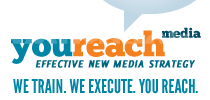
You know you love house hunting, and shopping for the perfect home is a fun pastime, but to move from being an open house and model home butterfly requires that big initial financial outlay … the dreaded downpayment. In fact, sticker shock sometimes deters potential homeowners from making the decision to buy at all.
To get from where you are to where you want to be, you don’t need a windfall (although that would be awesome), you need to create a budget allows you to live today AND save for that downpayment—and don’t forget those closing costs. Then, once you’ve created a budget … you need to protect it from the temptation to dip in now and again along your way to homeownership.
Here are some savings tips AND some budget-busters to navigate around:
Strategies for saving:
- Open a savings account. This might seem like a no-brainer, but many people don’t have one savings account, let alone more than one. If you already have one, open another one specifically for your downpayment. Having an account earmarked explicitly for your downpayment might make you think twice about raiding it for other expenses that crop up.
- Use a separate bank. There are two main options for options for your savings account: use the same institution you use for your checking account OR use a different institution. Some people advocate opening up the savings account at the same bank as your checking account for the convenience of transferring money. BUT, if you’re already having trouble saving up that downpayment, you want to make it a bit harder to get at, so consider opening up a credit union account or a savings account in a different bank.
- Use direct deposit. If your employer’s payroll system allows it, have the savings portion of your paycheck sent directly to your savings account. That way, you’ll have less immediate access to it, won’t see it in your checking account and may be less likely to spend it.
Establish a budget:
Once you have a mechanism for saving in place, establish a budget around your remaining income. You can find many online programs to help you create and keep track of your budget. Many are free to use, but some offer the opportunity to consult with a financial planner for a fee. Here are is a short list to get your started:
Budget busters:
Many people resist living on a budget because it seems so restrictive. That idea, that a budget ties you down like a parent looking over your shoulder, keeps many young people from reaching even simple financial goals. The challenge is that many of us see spending money as a reward, but money is really just a tool to help get you what you truly want. If you REALLY want to own a home, watch out for these budget-busters that will keep you from getting there:
- Overpriced vacations. Whether it’s the dog days of summer, or wanting to escape the winter blues, the lure of travel is everywhere in every season. Cheap flights with hotel, rental car and tour or show ticket add-ons seem like the perfect solution, but before you pull out that credit/debit card, think about what you really want: a new home or a temporary break. That doesn’t mean you don’t take vacations, just that you think twice (or three times) before paying too much and being sorry later.
- Overpriced coffee. Well … not just coffee, but if your coffee/tea/cola/energy drink habit adds up to more than $10 a day you’re probably busting your budget. If you saved just half of that ten dollars a day, you’d have $1825 in your savings account by the end of the year. If two or more members of your household curb their caffeine habit, by year’s end you could have $3600 to $4500 saved up.
- Dining out. Much like your caffeine fix, dining out can break a budget real fast. According to The Simple Dollar, the average American spends $232 each month eating out. You don’t have to give up eating out, but like your caffeine fix, if you just cut that in half, you’ll have an extra $116 a month—a whopping $1392 a year—to add to your savings.
- Expensive clothes. These days, many offices allow casual dress, but if you work in a highly professional environment that requires a more put-together look, you still don’t need to break the budget. Purchase just the key pieces you need—those that can do double duty—and change up with accessories.
Added together, these savings of about $5800 (or more) can be enough to qualify you for the downpayment on a $100k home using an FHA loan. If you add to that all, or even part of any extra money you get through out the year (birthdays, holidays, bonuses, rebates) your downpayment account can grow significantly in just one year.
Compliments of Virtual Results






 Catch Our Feed
Catch Our Feed Subscribe via Email
Subscribe via Email Follow Our Tweets
Follow Our Tweets Friend Us On Facebook
Friend Us On Facebook Watch Us On Youtube
Watch Us On Youtube